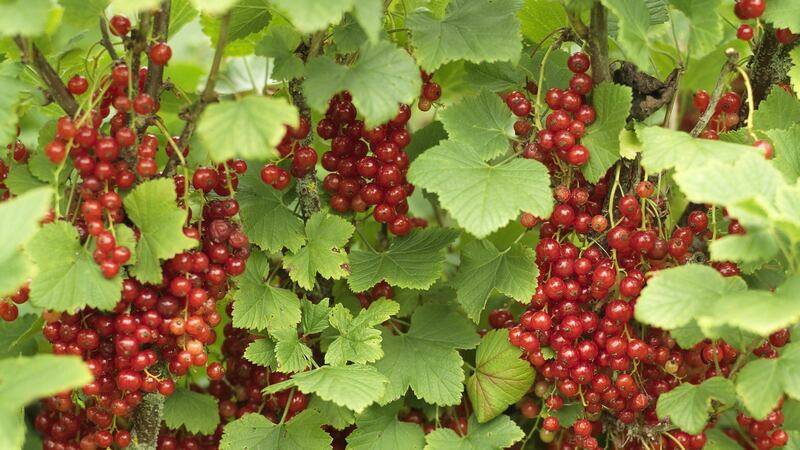It’s when leaves start to fall, flowers start to fade and the low autumn sun throws out its last, fierce shafts of glimmering, golden light that I find myself happily ogling seedheads in the garden.
I say ‘seedheads’, but botanically speaking, some of these are fruits, berries or seedpods. Ornate and complex in form, it’s now that their intricate beauty starts to shine so very brightly; if I had the talent to draw, paint or sculpt them, then I would, in a heartbeat.
In a wild, wet autumn, some of them might not last longer than the first fierce storm, but others are surprisingly robust and can remain decorative right into midwinter, while providing valuable food for wildlife.Take, as an example, the extraordinary fruits of the spindle tree, Euonymus europaeus, a small tree/large shrub native to much of Europe including Ireland.

For much of the year, the shy spindle tree hides its lights under a bushel. But come late autumn, it struts its stuff with a luminous display of foliage colour followed by tiny, fleshy, lipstick-pink fruits, which dangle like beads from its bare branches.
The German name for the plant is Pfaffenhutchen, which roughly translates as 'priest's hat', a reference to how the pink fruit's distinctive shape is similar to that of the traditional biretta worn by clergymen.
As these ripen, they split open to reveal tight clusters of seeds the colour of ripe pumpkins.
In the wild, the spindle trees grow mainly on lime-rich soils, in either sun or light shade; in my own garden, where the soil is slightly acid, it grows quite happily near the base of a sunny wall.
A cultivated form, Euonymus ‘Red Cascade’ is worth seeking out.The hardy strawberry tree, Arbutus unedo, is another supremely garden-worthy Irish native, with exceptionally decorative seasonal berries.
Plump and round, these ripen to the colour of strawberries in late autumn, hence its common name. But appearances can be deceiving. Unlike the true strawberry, this tree's berries taste unpleasant. The clue is in the Latin species name unedo, which roughly translates as 'eat one only'.
This lovely, evergreen tree is found growing wild in the mild coastal counties of Cork, Kerry and Sligo, where it can reach a height of 15 metres but much more compact forms are available. Although classed as an ericaceous plant, the strawberry tree is lime-tolerant. Also tolerant of windy sites (but not cold ones), it likes a fertile, well-drained soil in full sun/light shade.
Let’s not forget rose hips, for autumn would not be autumn without them. Some of the very best are to be found on Rosa rugosa, R. moyesii, R. glauca, and R. roxburghii. The latter is especially decorative, with fat golden hips covered in stiff scarlet bristles.
Woody trees and shrubs aside, there’s a wealth of other plants worth growing for their sculptural autumn seedheads. One is the easy-to-grow annual opium poppy, whose stiff, steely-blue seedheads, each with its own neatly frilled cap, beg to be examined up-close. Shake them like a baby’s rattle and you’ll hear the clatter of tiny, ripe black seeds.
Another is Love-in-a-mist, or Nigella, whose papery, balloon-shaped seed pods slowly inflate as they ripen, turning from green to deep-plum.
Most gardeners will also know Lunaria annua, or honesty, as it’s commonly known, and its transluscent, papery seedheads that remain on the plant long into late autumn. Grown where these are backlit by the low, almost horizontal light of late autumn/winter, they gleam.
Even more sculptural and long-lasting are the spiny, oval seedcases of fuller’s teasel (Dipsacum sativus fullonum). A subspecies of the wild plant, this herbaceous biennial’s common name refers to the fact that it was deliberately cultivated by fullers, who used the sharply bristled seedheads to ‘tease’ or gently comb the nap on woollen cloth.
Perennials well worth growing for their decorative autumn/winter seedheads include Sedum, Phlomis, Achillea, Agapanthus, Acanthus, Angelica, Crocosmia, Rudbeckia, Echinops, Thalictrum, Sanguisorba and Monarda. Alliums too, both the traditional border varieties such as Allium cristophii as well as kitchen types such as leeks and garlics.
And if you can ignore Iris foetidissima’s common name (the ‘stinking iris’) and forgive it its dull summer flowers, then the plant comes into its own in autumn with plump, lime-green seedpods that swell and split to reveal neat lines of brilliant orange seeds. Grasses worth growing for their graceful seed heads include Panicum, Molinia, Stipa and the dainty Briza maxima, whose tiny, heart-shaped seeds dangle daintily from slender stems and quiver in the gentlest of breezes.
All of these decorative seedheads, pods, berries and fruits also look exquisite in an autumn or winter flower arrangement, something the great floral artist and gardener, Constance Spry, proved many years ago when she used them for the swankiest of society weddings and balls.
Most can also be dried. To do so, simply hang them upside-down in small, tied bunches somewhere warm and dry indoors. I also always try to set a few aside to decorate Christmas wreaths.My apologies. Did I just use the ‘C’ word . . .











